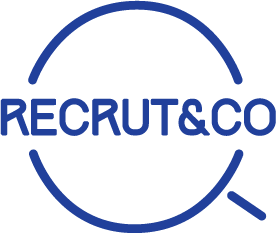- January 30, 2025
- 1:29 pm
The Different Styles of Human Resources Management: A Complete Guide
Human Resources (HR) management plays a crucial role in overall corporate performance.
Choosing the right management style can transform team dynamics and significantly improve efficiency.
In this article, we present the main HR management styles, their advantages and disadvantages, with a particular focus on Recrut&Co, a recruitment company that has chosen benevolent management to support its employees.

Direct Management
Directive management is characterized by a strict hierarchical approach. The manager gives clear instructions, and employees are expected to follow them without much discussion.
Advantages:
- Provides structure and discipline, useful in environments requiring rapid execution.
- Effective in crisis situations or when order needs to be restored.
Disadvantages:
- May reduce long-term employee motivation and commitment.
- Limits employee creativity and initiative.
Participative Management
In this style, managers actively involve their staff in decision-making. Dialogue and collaboration are essential.
Advantages:
- Encourages motivation and strengthens team commitment.
Promotes team cohesion and creates a sense of belonging.
Disadvantages:
- Decision-making may take longer due to numerous consultations.
Conflicts may arise if opinions diverge too widely.
Delegative Management
Delegative management is based on trust. The manager delegates responsibility for certain tasks to his or her staff, giving them a high degree of autonomy.
Advantages:
- Encourages employee empowerment and personal development.
- Stimulates creativity and innovation.
Disadvantages:
- Can lead to a lack of control if delegation is poorly managed.
- Less suitable for teams lacking experience or autonomy.
Paternalistic Management
Paternalistic management combines authority and benevolence. The manager makes decisions for the well-being of employees while maintaining firm control over operations.
Advantages:
- Employee loyalty through a sense of security.
- Strong interpersonal relationships, reinforcing team commitment.
Disadvantages:
- Employees may become dependent on manager to take initiative.
- Can stifle autonomy and innovation.
Management by Objectives (MPO)
Management by objectives is based on the definition of clear, measurable goals. Each employee is responsible for achieving his or her objectives, which are often assessed at the end of the period.
Advantages:
- Clarifies expectations and helps measure performance.
- Encourages autonomy and focus on results.
Disadvantages:
- Can generate stress and pressure to achieve objectives.
- Excessive focus on results can obscure the importance of the methods used.
Benevolent Management
Benevolent management focuses on the well-being of employees, both emotionally and professionally.
It focuses on creating a harmonious work environment where listening, empathy and valuing employees are central concerns.
At Recrut&Co, we have chosen to place employee well-being at the heart of our management strategy. This choice aims to boost team motivation while improving the quality of life at work.
Thanks to this benevolent approach, Recrut&Co employees are not only more fulfilled, they also contribute to creating a positive and committed working atmosphere, conducive to innovation.
Benefits:
- Promotes a better work-life balance.
- Increases employee commitment and loyalty.
- Creates a work environment where trust and collaboration are at the heart of relationships.
Disadvantages:
- Can be perceived as a lack of firmness if management fails to maintain sufficient rigor in processes.
- The risk of prioritizing well-being over performance may be present if the balance is not well managed.
Agile Management
Agile management values flexibility and adaptability. It focuses on collaborative processes and frequent feedback, enabling greater responsiveness to change.
Advantages:
- Encourages innovation and adaptability.
- Reinforces team cohesion thanks to continuous feedback cycles.
Disadvantages:
- Requires a high degree of autonomy and the ability to adapt quickly.
- Without a clear framework, it can lead to confusion and inefficiencies.
Authoritarian Management
Authoritarian management is based on centralized decision-making. The manager imposes his choices without consulting employees.
Advantages:
- Quick decisions, effective in emergency or crisis situations.
- Suitable for certain environments where firm leadership is required.
Disadvantages:
- Generates frustration and loss of motivation among employees.
- Stifles innovation and employee involvement.
Le Management Collaboratif
Collaborative management relies on co-construction with teams. Managers and employees are equal in decision-making.
Advantages:
- Encourages creativity and innovation.
- Reinforces shared responsibility and team spirit.
Disadvantages:
- Decision-making can be more complicated, as the process requires consensus and alignment.
- Can lead to tension or conflict if objectives are unclear.
Each HR management style has its strengths and limitations. The important thing is to choose the method that best suits the needs of the company and its teams.
It’s also essential to be flexible in your approach, and to combine different methods depending on the context.
At Recrut&Co, benevolent management has proved to be an effective lever for creating a positive corporate culture, improving employee commitment and, ultimately, boosting overall performance.
Whatever the size or sector of your business, integrating benevolent management practices can have a significant impact on the well-being and productivity of your teams.
Did you like this article?
Don’t hesitate to share it!
Discover our QHCT: A strategic lever for corporate performance.
